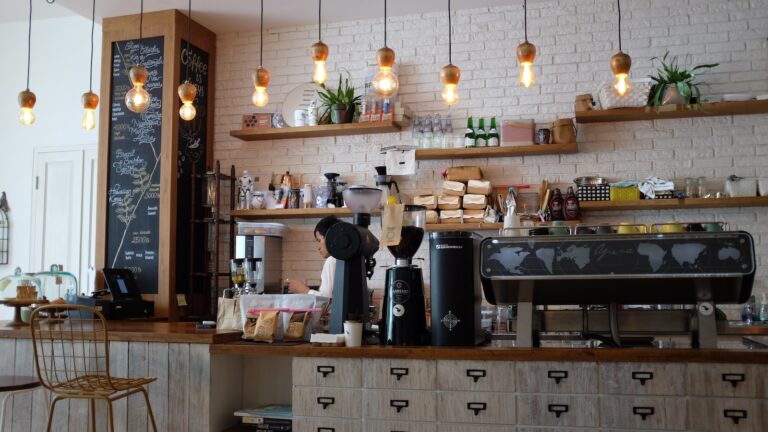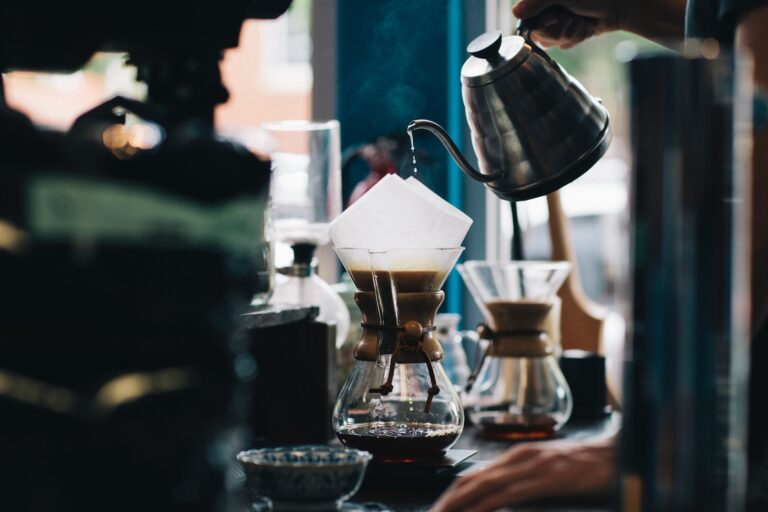Are you ready to embark on a caffeinated adventure? Join us as we dive deep into the captivating world of coffee beans! Whether you’re an avid coffee connoisseur or simply someone who enjoys a cup of joe in the morning, this blog post will take you on an exploration like no other.
From the luscious plantations where these magical beans are grown to the intricate roasting processes that unlock their full potential, get ready to awaken your senses and discover what makes each sip so special. So grab your favorite mug, settle in, and let’s journey together through the mesmerizing realm of coffee beans!
Introduction to the world of coffee beans

Coffee is undoubtedly one of the most popular and beloved beverages in the world. From specialty cafes to household kitchens, coffee has become a staple in our daily lives. But have you ever stopped to think about where this magical elixir comes from?
The story of coffee begins with the humble coffee bean. Native to Ethiopia, these small green beans are actually the seeds of the fruits produced by the Coffea plant. The two most common types of coffee beans are Arabica and Robusta, both offering unique flavors and characteristics.
Arabica beans make up for about 60% of the world’s coffee production and are known for their delicate and complex flavors. These beans originate from high-altitude regions such as Latin America, Africa, and Asia, where they grow at elevations higher than 2,000 feet above sea level. This high-altitude environment creates a slower growing process for the Arabica trees, resulting in a denser bean with more concentrated flavors.
On the other hand, Robusta beans make up for about 40% of global coffee production and are often used in espresso blends due to their strong and bitter taste. These beans thrive in lower altitudes (around 600-700 feet above sea level) and can be found primarily in African countries like Uganda and Ivory Coast.
History and origins of coffee
Coffee has been an integral part of human civilization for centuries, with a rich and fascinating history that spans different cultures and countries. While there are numerous legends surrounding the origins of coffee, its true history can be traced back to ancient times.
The first recorded instance of coffee being consumed was in Ethiopia, where the plant is believed to have originated. According to legend, a goat herder named Kaldi noticed that his goats would become energetic and restless after eating the bright red cherries from a certain bush.
Curious, he tried some of these cherries himself and discovered their invigorating effects. He then shared this discovery with monks at a nearby monastery who used them to stay awake during long hours of prayer.
From Ethiopia, coffee cultivation spread to the Middle East and reached its peak in Yemen during the 15th century. It was here that coffee beans were first roasted and brewed into a drink similar to how it is prepared today. The popularity of coffee quickly spread through trade routes to other parts of the world like Persia, Egypt, Turkey, Syria, and eventually Europe.
In Europe, coffee initially faced resistance from religious authorities who saw it as a Muslim drink and tried to ban it. However, Pope Clement VIII declared it acceptable for Christians in 1600 which led to its widespread adoption across European cities. Coffee houses became popular gathering places for people from all walks of life – from intellectuals discussing politics and literature to merchants closing business deals.
Popular coffee bean regions and their unique flavors (Latin America, Africa, Asia)
Coffee beans are a fascinating world of flavors and unique characteristics that are influenced by their growing regions. Depending on where they are grown, the soil, climate, altitude, and processing methods all play a crucial role in creating distinct flavor profiles in coffee beans. In this section, we will explore the three most popular coffee bean regions and how each one produces its unique flavors: Latin America, Africa, and Asia.
Latin America is known as the birthplace of some of the finest coffee beans in the world. Countries such as Brazil, Colombia, Costa Rica, and Guatemala are major contributors to the global coffee market. The region’s warm climate and high altitudes create ideal conditions for producing Arabica beans – the most widely consumed type of coffee worldwide.
These beans have a milder acidity level compared to other regions but are often characterized by a full-bodied flavor with notes of chocolate and caramel. Colombian coffee is particularly well-known for its balanced taste profile with hints of fruitiness.
Moving on to Africa, this vast continent is home to several renowned coffee-producing countries such as Ethiopia, Kenya, Tanzania, and Rwanda. African coffees tend to have a higher acidity level due to their growing conditions at high elevations on mountain slopes or volcanic soils.
Ethiopian coffees have been dubbed as some of the most exotic and complex-tasting beans globally due to their diverse range of flavors ranging from fruity notes like blueberry or strawberry to more floral tones like jasmine or lavender. On the other hand, Kenyan coffees tend to have a strong, bold flavor with a striking acidity and savory aftertaste.
Lastly, we have Asia, which has a smaller but still significant role in the global coffee market. Indonesia, Vietnam, and India are some of the key coffee-producing countries in this region. Asians often prefer their coffee with a thicker body and less acidity, and these preferences are reflected in the beans’ flavors.
Indonesian coffees like Sumatra and Java are known for their bold flavors with hints of earthy and herbal tones. Vietnamese coffee is famous for its use of chicory root in its processing method, resulting in a distinct nutty flavor. In contrast, Indian coffees often have milder acidity levels with notes of spices such as cardamom, clove, or cinnamon.
In conclusion, each of these regions produces coffee beans with unique characteristics that are influenced by various factors specific to their location. From the balanced flavors of Latin America to the exotic notes of Africa and the boldness of Asian beans, experiencing coffee from different regions can be an exciting journey for any avid coffee lover.
Understanding the terminology: single origin vs. blends
When it comes to coffee, one of the first things you might notice on a bag or menu is whether it is labeled as “single origin” or as a “blend.” These terms are often used to describe the origin of the coffee beans and can greatly impact the flavor and characteristics of your cup. In this section, we will explore the key differences between single origin and blends, and how understanding these terms can help you choose your perfect cup of coffee.
Single Origin Coffee:
As the name suggests, single origin coffee refers to beans that have been sourced from a single geographical location or farm. This means that all the beans in a bag come from one specific region, country, or even just one particular farm. For example, a bag labeled as “Colombian Single Origin” would contain beans exclusively grown in Colombia.
The advantage of single origin coffees is that they offer unique and distinct flavors that are exclusive to their specific growing region. This is because various factors such as climate, soil composition, elevation, and processing methods all contribute to the final flavor profile of the beans. So when you drink a cup of single origin coffee, you are essentially experiencing the taste of that particular place’s terroir (environmental characteristics).
Blended Coffee:
On the other hand, blended coffees consist of multiple types of beans sourced from different regions or farms. These blends are often created by roasters to achieve a balanced flavor profile by combining different types of beans with varying characteristics.
Blends provide ro asters with the opportunity to create unique and consistent flavor profiles year after year. By mixing beans from different regions, roasters can balance out any variances in flavor that may arise due to changes in weather conditions or crops.
Additionally, blends allow for greater flexibility in terms of taste. Roasters can experiment with different combinations of beans from varying origins to create complex and layered flavors that are not achievable with single origin coffees.
Which one is right for you?
Both single origin and blended coffees have their own unique qualities, making it challenging to pick a winner. Ultimately, your preference will depend on your taste buds and personal preferences. Some coffee drinkers enjoy the distinct flavors of single origin coffee, while others may prefer the consistency and balanced taste of blends.
If you’re looking for variety and new experiences, then single origin coffee might be a good choice for you. Each bag will bring something different to your cup, providing an exciting journey through different flavor profiles from around the world.
But if you want a reliable and consistent cup of coffee every time, then blends may be more suitable. You can trust that each bag will contain a familiar and enjoyable taste that you can always rely on.
Brewing methods for different types of coffee
When it comes to brewing coffee, there are various methods that can be used to bring out the unique flavors and characteristics of different types of coffee beans. Each method has its own set of steps and techniques that can greatly affect the taste, aroma, and overall experience of your cup of coffee.
1] Drip or Pour Over Method: This is one of the most popular methods used for brewing coffee. It involves pouring hot water over ground coffee beans placed in a filter, allowing the water to drip through and extract the flavor from the grounds. The result is a clean and crisp cup of coffee with a light body, making it perfect for lighter roasts such as breakfast blends or single origin coffees.
2] French Press: This method involves steeping coarsely ground coffee beans in hot water for several minutes before pressing down a plunger to separate the grounds from the liquid. French press brewing results in a bolder and stronger flavored cup of coffee, making it an ideal choice for darker roasts such as espresso or French roast.
3] Cold Brew: As its name suggests, this method involves steeping ground coffee beans in cold or room temperature water for an extended period (usually 12-24 hours). The slow extraction process produces a smooth and less acidic cup of iced coffee, making it perfect for hot summer days or those who prefer a milder taste profile.
4] Aeropress: Developed in 2005 by engineer Alan Adler, this relatively new method uses pressure to extract the flavor from coffee grounds. It involves placing a filter filled with ground coffee on top of a small chamber, adding hot water, and then using a plunger to push the water through the grounds. Aeropress brewing creates a full-bodied and flavorful cup of coffee, making it ideal for all types of roasts.
5] Espresso: This method is commonly used in specialty coffee shops and is characterized by its strong and intense taste. It involves forcing pressurized hot water through finely ground coffee beans for a short amount of time, resulting in a concentrated shot of espresso. Espresso brewing requires specialized equipment such as an espresso machine or moka pot.
6] Turkish Coffee: This traditional method involves boiling finely ground coffee beans together with sugar and water in a small pot called an ibrik or cezve. The resulting brew is thick, rich, and highly aromatic, making it perfect for those who prefer a strong cup of coffee.
7] Cold Drip: Similar to cold brew, this method also uses cold water but instead drips it slowly over ground coffee beans placed in a filter or mesh apparatus over several hours. This slow extraction process results in a delicate yet full-bodied and flavorful iced coffee.
Conclusion
As we have seen, there is a vast and diverse world of coffee beans waiting to be explored. From the different types and origins to the various roasting methods, there is always something new and exciting to discover in the realm of coffee. By experimenting with different beans and brewing techniques, you can find your perfect cup of coffee that suits your taste buds. So go out and explore this wonderful world of coffee beans – who knows what delicious discoveries you may make!







